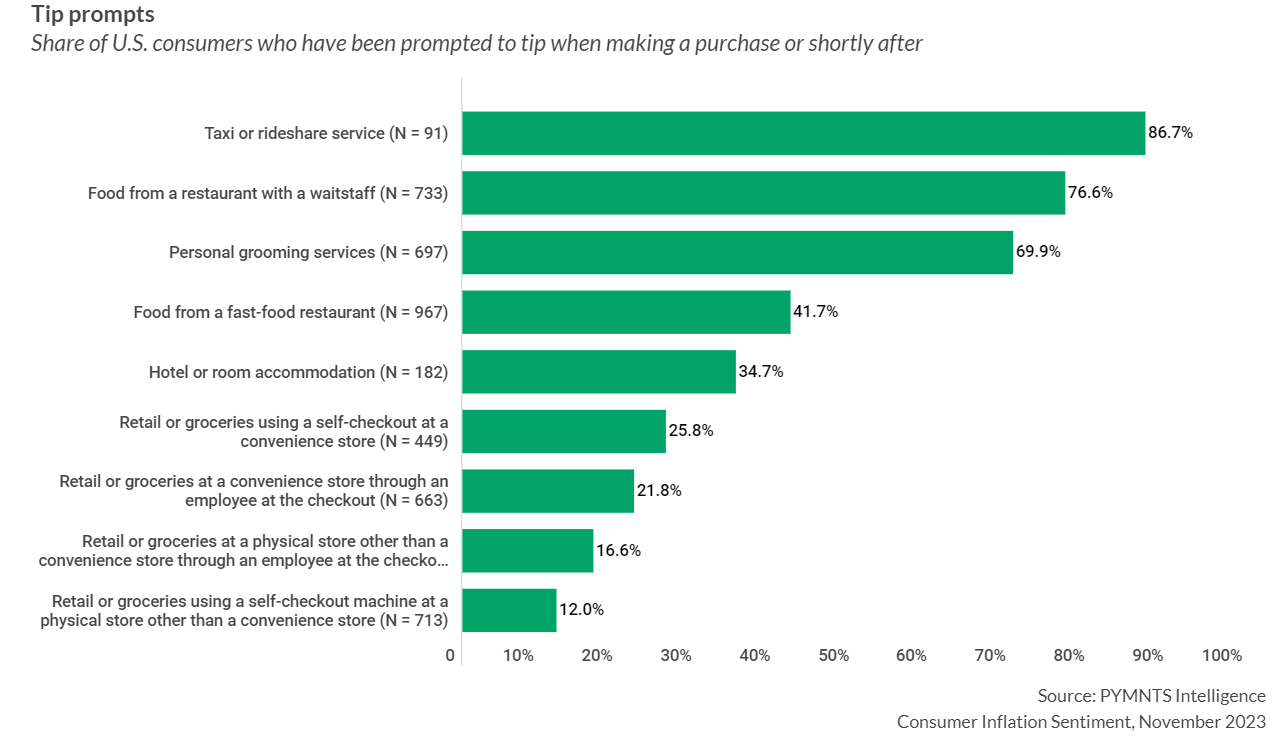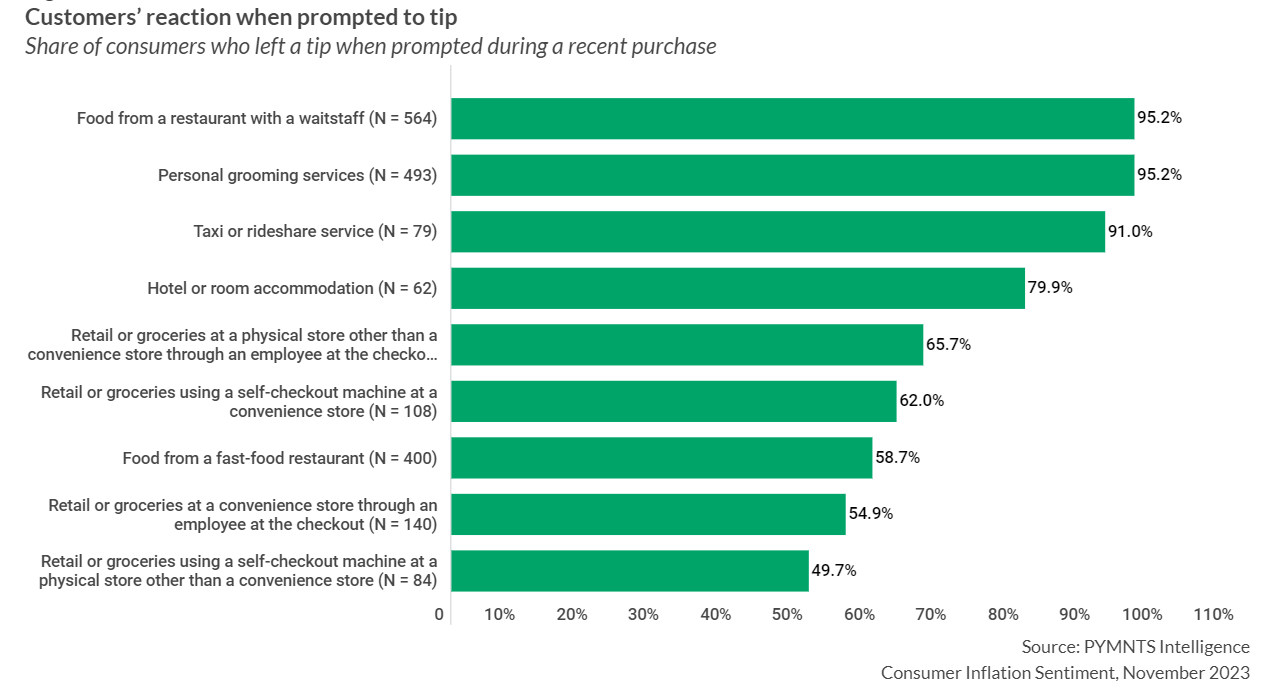
Inflation has emerged as a significant force in the economy, impacting consumers’ purchasing power and influencing various aspects of their daily interactions. One area where the effects of inflation are increasingly noticeable is tipping.
In “Consumers Overwhelmed as Inflation Pressures Reach Tips,” PYMNTS Intelligence analyzes inflation’s impact on tips, drawing on insights from a survey of 2,000 U.S. consumers to better understand how consumers react to businesses in the service industry and beyond pressuring them to tip.
According to findings detailed in the study, tipping norms have reached a tipping point, with sectors and industries overcompensating for inflation by escalating where consumers tip and by how much. This phenomenon, known as “tipflation,” has caught the attention of consumers, with a significant percentage noting changes in tipping expectations and practices.
The integration of tipping into the checkout experience through digital POS technology has further exacerbated tipflation. Digital screens, which are increasingly common, often present higher percentage options for tipping, resulting in consumers tipping higher amounts when prompted by a digital screen compared to a traditional tip jar. This proliferation of screens has made tipping more prevalent, even in unconventional settings such as fast-food drive-thrus and self-checkout kiosks.

Social pressure also plays a significant role in tipflation. The presence of others, whether strangers or acquaintances, influences consumers’ tipping behavior. Data shows that consumers are more likely to tip higher amounts when observed by others. Modern technology, such as digital screens, indirectly amplifies this social pressure by broadcasting tipping amounts in real-time.
Additionally, merchants are asking for tips in situations where gratuities were not previously expected, catching nearly 30% of customers off guard. This trend is particularly evident during the checkout process, where 27% of consumers have been prompted to tip unexpectedly.
Examining the data further shows that a significant share of consumers have been prompted to tip when making a purchase or shortly after a recent taxi or rideshare service (86.7%), ordering food from a restaurant with a waitstaff (76.6%) and after receiving personal grooming services (about 70%). Nearly 35% of guests at a hotel or with room accommodation and more than 41% of diners at a fast-food restaurant, respectively, have been prompted to do the same.

On the upside, consumers react positively to tip prompts, with more than 90% leaving a tip after completing a taxi service, personal grooming service or buying food from a restaurant with a waitstaff.
Similarly, a significant share of consumers (80%) at a hotel or with a room accommodation left a tip when prompted to do so. Tipping is particularly important in the hospitality industry, separate PYMNTS research has shown, helping to boost staff retention and avoid check-cashing fees when paid out in real time.
Nonetheless, consumer frustration with tipping expectations has grown, with 34% of respondents feeling that tipping has gotten out of hand. Interestingly, this frustration is more pronounced among higher-income consumers, suggesting that tipping expectations may be influenced by income levels.
In conclusion, tipflation has emerged as a consequence of inflationary pressures, resulting in consumer frustration due to elevated tipping expectations. Looking ahead, businesses must be mindful of consumers’ tipping thresholds to avoid potential backlash and consumers’ switching merchants if asked to tip an unreasonable amount.